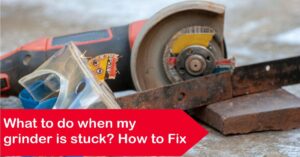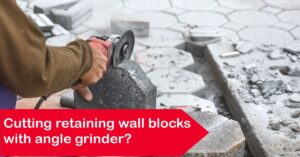When we think about tools, there are so many options available out there, right? One of the most versatile and popular tools is the drill. It is very useful for all kinds of projects, whether you are working with driving screws or hole saws. But hey, have you ever wondered whether hex bits can be used in a drill?
Well, guess what? You totally can! Using hex bits in a drill is absolutely possible. It opens up a whole new world of possibilities for your drilling projects. However, you need to make sure it is securely fastened and refrain from drilling too quickly. Otherwise, you run the risk of damaging the drill or the bit.
In this article, I will explore the compatibility of hex bits with drills, discuss the factors to consider, highlight any potential limitations or risks involved, and discuss how to evade them. By the end, you will have a better understanding of whether can you use hex bits in a drill for your specific needs.
Can You Use Hex Bits in a Drill?
Hex bits are not designed to fit directly into a drill chuck. Hex bits have a hexagonal (six-sided) shape and are typically used with tools specifically designed for hex bits, such as hex-bit screwdrivers, ratchets, or impact drivers. However, there are drill bits with hex shanks available that can be used with certain types of drills.
These drill bits have a hexagonal shank that can fit into a drill chuck that is designed to accept hex-shaped bits. These drills are commonly known as hex shank drills or hex bit drills. So, while hex bits themselves do not fit directly into a standard drill chuck, there are drill bits with hexagonal shanks that can be used with specific drills designed for hex bits.
However, you need to take some careful measures to fit hex bits in a drill. First off, make sure you secure the hex bit properly in the drill. You want it nice and snug, so it doesn’t wobble or come loose while you’re drilling away. A loose bit can lead to all sorts of trouble, and you don’t want that!
Secondly, take it easy with the speed. Don’t go drilling at full throttle. Hex bits are generally designed for lower torque applications, so if you push them too hard, they might get damaged. So, it is better to take your time and let the drill do the work smoothly and steadily.
Risks Associated with Using Hex Bits in a Drill
Hex bits are pretty handy tools that you can use with both drills and impact drivers. They are small and can easily get fitted into tight areas, which makes them perfect for driving screws and various other fasteners into tricky-to-reach spaces. However, there are a few risks to using hex bits in a drill that you should keep in mind. Let’s take a look at them below:
The Hex Bits Might Break
When you are using hex bits in your drill, there is a risk of the bit breaking while you are in action. It can occur if the bit isn’t correctly secured in the chuck or if it is built from a delicate material. And trust me, if that bit breaks, it can send metal shards or other debris flying, which nobody wants because it could lead to some serious injuries.
Also, if the bit gets stuck in the material that you’re drilling, it is going to be a real pain in the neck trying to get it out. So, it is important to be cautious and take proper precautions to avoid any injuries.
The Bit Could Lose Its Position on the Chuck
Let’s talk about another risk when it comes to using hex bits in your drill. There is a chance that the bit might just slip right out of the chuck while you are busy drilling away. How does that happen? Well, if you didn’t properly secure the bit in the chuck before you started drilling, or if it somehow becomes loose during the drilling process, then it can happen.
It is possible for the bit to fall and become trapped in the material you’re drilling if it comes loose from the chuck. If that happens, both the drilling material and the bit can get damaged. It is definitely a situation you want to avoid. So, always make sure to securely fit the hex bit into the chuck before you start drilling, and keep an eye out for any signs of it becoming loose during your drilling task.
The Hex Bit Might Damage the Work Area
Another risk that comes with using hex bits in a drill is the potential damage to your precious workspace. Yeah, it is a bummer, but it is important to be aware of it. How does this happen? Well, imagine the bit slipping out of the chuck and falling out, or even worse, breaking during use and sending metal shards and other debris flying, causing havoc in your workspace.
That is not a pretty sight, and it could leave you with a drill that has been damaged and a workspace in need of serious repair. To avoid such mishaps, it is crucial to handle hex bits with the utmost care when you’re working with your drill. You don’t want any unplanned accidents to ruin your day, right? So, be extra cautious and make sure everything is securely in place before you start drilling away.
Some Important Tips that You Should Know for Utilizing Hex Bits in a Drill
Remember those risks I mentioned earlier about using hex bits in a drill? Don’t worry, because I have got your back with some very useful tips to help you reduce those dangers and keep things safe and sound while using your hex bits. So, here is a breakdown of some of the important tips for utilizing hex bits in your drill:
Make Sure that the Bit Is Correctly Secured in the Chuck
Making sure the bit is securely fitted in the chuck before starting to drill is one of the most crucial steps you should take to prevent issues during using hex bits in your drill. It means that you should take a moment to double-check that the hex bit is not loose and is tightly fitted in the chuck.
Also, don’t just do the initial check and forget about it. It is wise to periodically give the chuck a quick glance during your drilling session. Why? It is because sometimes those bits can have a mind of their own and decide to loosen up while you are in action. If you notice any looseness, hit the pause button on your drill and tighten that bit up before you continue.
Remember, a properly secured bit is the key to smooth sailing during your drilling tasks. Take that extra moment to ensure everything is correctly secured, and you will be drilling like a champ in no time.
Use Bits Built of Sturdy, Long-Lasting Materials
When it comes to using hex bits in your drill, one crucial aspect you don’t want to overlook is the choice of materials. I am talking about the stuff that makes the hex bits sturdy and durable, ready to take on the drilling challenges you throw at them.
Nowadays, hex bits come in a variety of materials, ranging from metal to aluminum and steel. Let’s talk durability first because that is where the real magic happens. When you want a hex bit that can handle some serious drilling tasks without breaking a sweat, aluminum, and steel are the top contenders.
They are tough, reliable, and built to withstand the demands of tough drilling projects. However, they can also hit your wallet a bit harder than other options. So, if you are looking for an affordable option, metal hex bits can still do the trick while being friendly to your hard-earned cash.
Use a Bit With a Solid Chuck
Another awesome trick to ensure a smooth drilling experience with your hex bits in a drill is choosing a bit with a solid chuck. You will find two types of chucks in the market, which are keyed and keyless. A keyed chuck comes with a lever that you can use to loosen or tighten the bit.
On the other hand, a keyless chuck does not have a lever but fear not, it has its own style. It has a chuck that you can tighten up by hand, using your very own grip and finesse. A keyless chuck is generally more user-friendly and less prone to slipping compared to a keyed chuck.
Take Caution During Drilling
When you are using these bits in your drill, you have to make sure you are being careful. Take your time and be cautious throughout the drilling process. One thing you really wanna watch out for is your drilling speed. If you go too fast, there’s a higher chance of the bit slipping out of the chuck and even breaking in half.
Also, when it is time to remove the hex bit from the drilling material, be extra careful. Don’t pull very hard, because you might end up breaking the bit. So remember, slow and steady wins the race when it comes to drilling with the hex bits.
Inspect the Hex Bit Frequently
Lastly, it is always a wise decision to examine the hex bit frequently when you are using it in your drill. This way, you will be able to spot any issues early on and prevent any probable accidents. Pay special attention to inspecting the hex bit for any signs of damage before every use. If you spot any chips, cracks, or any other kind of damage, you have to replace the hex bit before you get to drilling.
Final Words
Finally, I can say that you can use hex bits in your drill. However, you gotta be careful because there are a few risks involved. The scariest risk of all is when the hex bit decides to slip right out of the chuck. Trust me, that is a recipe for some serious injury, and you definitely want to avoid that at all costs.
But that is not the only risk. You gotta keep in mind that the hex bits can also break, and when they do, it is not just the bit that suffers. Nope, your precious workpiece might just end up getting damaged too. And nobody wants that, right?
So, the bottom line is if you are gonna use hex bits in your drill, just be extra cautious. Make sure that chuck is tightened up really well, and keep an eye on those bits for any signs of wear and tear. I am hopeful that this article has helped you to clear your confusion about whether can you use hex bits in a drill or not.




